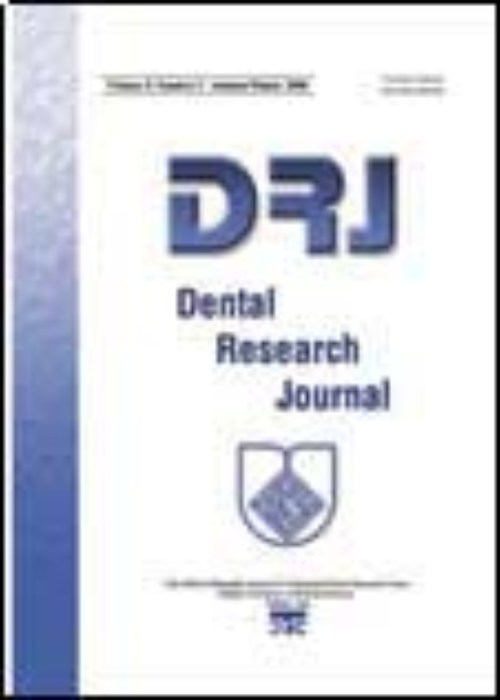Effects of at-home and in-office bleaching and three composite types (hybrid, microhybrid, and nanofilled) on repair shear bond strength of aged composites: A preliminary study
Only a few controversial studies have assessed the repair bond strength of a fresh composite to aged composite. Moreover, no studies exist on repair bond strength of fresh composites to bleached composites. Therefore, this preliminary study was conducted to assess repair shear bond strength (SBS) of three composites bonded to nonbleached and at‑home and in‑office bleached composites.
In this experimental in vitro study, 108 disks(36 specimens per composite) of hybrid, microhybrid, and nanofilled composites were divided into three subgroups of three bleaching treatments: no bleaching (control), at‑home bleaching, and in‑office bleaching. Composite disks were incubated for 4 weeks in artificial saliva (also dipped in tea and coffee for 3 h a day). They were then thermocycled (5000 cycles). Afterward, the control group remained unbleached, while the other groups were bleached according to office and home bleaching methods. They were repaired with the same composite type. Their repair SBS and mode of failure were measured and analyzed using two‑way ANOVA, Tukey, one‑sample t‑test, and Chi‑square tests (α = 0.05, β = 0.2).
The mean (standard deviation) SBS values of hybrid, microhybrid, and nanofilled composites were 20.71 ± 5.99, 21.06 ± 6.68, and 9.46 ± 4.32 MPa, respectively. The mean SBS values of the bleaching techniques “home bleaching, office bleaching, and no bleaching (control)” were, respectively, 16.35 ± 7.13, 16.39 ± 8.07, and 18.49 ± 8.35 MPa. There was a significant difference among composites (two‑way ANOVA P = 0.000) but not among nonbleaching/bleaching methods (P = 0.176). Their interaction was significant (P = 0.017). The difference between hybrid and microhybrid was not significant. Nevertheless, nanofilled had significantly poorer results compared to both hybrid and microhybrid composites (Tukey P = 0.000). Both hybrid and microhybrid were capable of producing satisfactory clinical repair bond strengths (above 20 MPa) regardless of bleaching or lack of it. Nanofilled composite failed to provide proper repair SBS values, even in the control (no‑bleaching) group. By moving from Z100 or from Z250 to Z350, modes of failure shifted from mostly cohesive to mostly adhesive (P < 0.05).
Bleaching of an aged composite might not affect the repair bond strength. Hybrid and microhybrid composites can provide clinically acceptable repair bond strengths, regardless of bleaching. Nonetheless, nanofilled composite is inferior to them and cannot provide appropriate repair bond strengths (regardless of bleaching).
- حق عضویت دریافتی صرف حمایت از نشریات عضو و نگهداری، تکمیل و توسعه مگیران میشود.
- پرداخت حق اشتراک و دانلود مقالات اجازه بازنشر آن در سایر رسانههای چاپی و دیجیتال را به کاربر نمیدهد.


